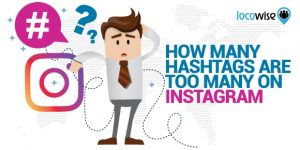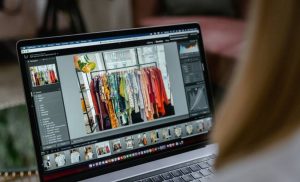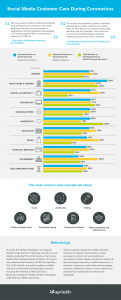
geralt / Pixabay
Every Facebook marketer at some point in their career has asked this question: How many times should I show an ad to the customer before they decide to buy? You might also be worried, that your ads are being shown too much and customers are starting to get annoyed. Either Way, the optimal ad frequency is something that has been researched upon for decades. Throughout the years, some have sworn upon the number three others are sure it’s seven but recent studies might suggest the numbers are even higher.
What is ad frequency?
Before we dive into what the optimal ad frequencies lets get to know what ad frequency means in the digital advertising space. Put simply, Ad frequency refers to the number of times the same ad is displayed to a target audience. Facebook marketers are well aware of the different ways ad frequencies can impact the effectiveness of their campaigns. You can use Facebook’s ad manager to monitor, optimize and control ad frequencies in various ways. We will be discussing these topics in detail but first, let’s look at why ad frequency matters.
Why you should care about frequency?
In the age of big data, we are bombarded by metrics. So why does this one metric matter so much?
Ad frequency tries to answer the question of how many times buyers need to see an ad before they show buying intent. Staying aware of your optimal frequency can act as an indicator of whether you should be showing more of your ad to the same people or conversely, find out if a sample of your audience has not seen your ad enough times.
In the former case, advertisers can be spending (or wasting) valuable ad spend money on buyers who have either already converted or will never convert. If that’s the case it’s better to spend your money elsewhere. Ideally, your ads should be spent on people who might convert if they watched the ad a couple more times.
Why do people need repeated exposure to ads?
There are multiple studies that state that people need repeated exposure to ads before buying. However, you might be in the camp of advertisers who don’t understand why someone needs to ad more than once.
While this does put you into a minority group of advertisers, the average customer needs to see an ad multiple times and here are some reasons why:
- Most people will miss your ad the first time you show them.
- They will not recall the ad after the second viewing
- Even if they remember it after seeing the third time, they might not be in the right mood to buy. And by the time they’re ready they’ve already forgotten about your ad.
- They might’ve missed important information the first time they noticed the ad.
Now that I’ve hopefully convinced you to show your ads more than once, it’s also important to know what happens when you show ads too frequently.
Higher Ad Frequencies can increase your CPM.
Finding your ideal frequency can be crucial in managing your CPM and other key digital marketing metrics.
In the normal course of Facebook campaigns, Facebook tends to serve ads more frequently to the same people as time passes. Not only is this a waste of your money (if people are seeing your ads more frequently than they need to) it also increases all your costs such as CPC, CPM, and CPR. Ideally, Facebook manages your ad frequency for you but you can take charge of it by optimizing your objectives.
See below to read about how to control your ad frequency.
Overexposure might lead to Ad fatigue.
Ad fatigue happens when either showing more of your ad does not increase brand recall or worst-case scenario leaves a negative impression in your customer’s mind. This can lead your customers to unsubscribing from your page, hiding your posts or forming a strong dislike for your brand. In some extreme cases, your customer’s dislike might be so strong, they might not buy from you even when they are actively searching for your product. In which case they’d rather buy from the competition than you.
What do the experts have to say about Optimal Frequency?
The golden rule of advertising that says a buyer must see an ad 3 times before they make a purchasing decision. This might notion was widely believed thanks to a 1970 study that studied Ad viewing patterns. But advertisers agree that previous studies had its limitations. In most part, these studies were conducted in a laboratory setting and the customer was already in the market for the product.
So what happens when your consumer is not ready for purchase? Newer studies estimate that a potential customer might need to see your ad as much as ten times before they can recall it. Repeating Ads can increase retention, gain trust and provide the nudge needed to convert. Additionally, the more complex or expensive the purchase, the more exposures might be required to convince the customer to purchase your product.
So is it three or ten. What’s the magic number?
I think it’s safe to say that there is no magic number. In all likelihood, there never will be. While these studies where done by experts in their field who had great knowledge about the subject, every product/market has its own set of rules that is unique to them.
At best, take these studies as a point of reference. What the studies provide is a groundwork for advertisers to understand how people react to ads. Understand why we need repeated exposures and when to change our frequencies depending on where the customer stands in his customer journey.
Finding optimal frequency for digital ads
Facebook does not show you the metrics for how many exposures your customer has had prior to making a purchase. So, it is quite possible that we may never know exactly how many times we need to show your customers the same ad. But, that doesn’t mean that we can’t minimize the negative effects of overexposing our customers to our ads.
Here is what I have done to minimise overexposure and its negative impacts on my campaigns:
Tracked the number of negative feedback on my ads.
Overexposure to your Ads can lead to ad fatigue which will lead to negative impacts on your page and post. Go to your post insights to see how many people have reacted negatively to your posts. If you have a higher than average ad frequency and the audience still hasn’t hidden your posts from your timelines you can rest assured that people aren’t tired of your ads yet.
Used Facebook Pixel to track people who have converted and stopped showing them ads.
You can use Facebook Pixel to track conversions to your website. If you don’t want to waste money on people who have already purchased from you, the best course of action would be to head on to audiences in your business manager page and create an audience specifically containing people who’ve made a purchase.
Proceed to exclude them from your next few campaigns until you are certain that those audiences are ready to make a purchase again.
Set up an A/B test where I showed a new audience the same ad at two different frequencies.
Head over to your ad manager to split test your ads. You can choose to split test the frequency of your ads by choosing the “Reach” objective and selecting the delivery optimisation option to test two or more frequencies.
Testing two or more Frequency caps can help you find out an optimal frequency where your costs are at its lowest. Also, if you have pixel installed on your page, you can see which Frequency strategy led to more people clicking on your website and making a purchase.
Checked to see if an audience has been used too many times throughout various campaigns.
One final check I always do is to see how often I use the same audience. If I have been using the same audience for a long time, I will test it against a newer audience with minimal overlap to see if it still works. If the old audience results in higher costs and lower conversions, I know that it’s time to move on to a new audience.
How to optimise ad frequency
The techniques I’ve talked about has helped me keep my costs low and find out frequencies that work for my clients. However, there are easier ways to ensure that you have control over the frequency. You can let Facebook manage your ad frequency by optimizing for different objectives when creating ads.
Link Clicks
When you optimise for Link clicks, Facebook automatically searches for people who are likely to click on your ad and visit your website. After 3-4 deliveries, Facebook stops showing your ads to the same audience and looks for someone else who is likely to make a click.
Impressions
Optimizing your ad for impressions will indicate Facebook that you only care about the number of impressions. This tells Facebook not to care much about other metrics like CPC, Engagements, etc. Choose this option if you are creating Brand Awareness but be aware that it can lead to ad fatigue very fast.
Daily Unique Reach
If you are looking for a way to keep ad frequency low and reach out to as many people in your target audience then this option is the way to go. Choosing Daily Unique Reach optimises your ad to show it only once per day to the same person. While this doesn’t guarantee that the same people will not see the ad again the next day, you can rest assured that the overall ad frequency will be lower than what it would’ve been if you chose to optimise for impressions.
Set automated rules for ad frequencies
If your objective with monitoring frequencies is to keep costs lowered, then automated rules are an essential tool to help you out with that.
You can create new rules in the ad manager by clicking on the three dots on the right of “create ads option”. Once you’ve managed to find your way into this feature, head over to the title named “condition” and set your desired frequency.
You can either choose to stop your campaign when a campaign goes over your desired frequency or ask Facebook to send you a notification by mail.
Another way to directly control your costs is to tell Facebook to stop ads when your CPC, CPM or any other metric exceeds the desired amount. This way, although you’re not directly affecting the frequency, you can control the costs of your ads.
Conclusion
The debate over ad frequency is still pretty heated on all fronts. If you came into this article expecting a solid number, I do apologize but as I said, there is no silver bullet. We can all hope that facebook will come up with an analytic tool that tells us how many times people have seen our ads before converting, but even then, you can rest assured that the number will vary widely between industries. Meanwhile, you can ensure that the impacts of ad fatigue don’t hit you by following the above techniques. More importantly, keep testing different ad frequencies and other variables until you are confident with the frequency you are showing ads.
Digital & Social Articles on Business 2 Community
(43)
Report Post






